TEKNE Production is a digital art- and experience-producing unit at the Centre of Advanced Visualization and Interaction (CAVI). TEKNE Production is commissioned by the Danish Ministry of Culture to create best–practice-based digital art and experiences at a national level. Originally anchored in a strong local setting of knowledge and experience, including the Architectural School, The Danish Institute of Electronic Music, the Digital Aesthetics Research Center (DARC), Aarhus University, and CAVI, Aarhus University, TEKNE Production works with artists and designers at a national level, and also participates in international presentations and collaborations.
TEKNE Production provides ongoing digital art and experience production, dissemination, and skill-building.
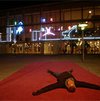
As a large-scale, interactive media facade, Aarhus by Light staged the encounter between the citizens of Aarhus and the Concert Hall, and facilitated new public behavior through the blend of architecture and digital media.

The statue of Holger the Dane seems almost intimidating, although he just sits there, sleeping. CAVI-developed technology makes it possible to bring Holger the Dane to life through interactive visualization.

Climate on the Wall is a large-scale media facade that used people’s movements to generate climate statements. During the climate conference Beyond Kyoto, citizens of Aarhus could express their commitment to get involved by creating sentences on a wall.
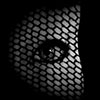
Breathless Moment Pilot is a Klejs & Rønsholdt production commissioned as a research project by The Royal Opera House in London, produced in collaboration with TEKNE Production, CAVI, DR’s Radiokor, and EditionS, and will be available as an app in the future.
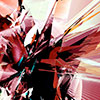
Skybox was a multi-sensory piece that employed sound and 3D graphics, and suggested new perspectives for the connection between music and dynamic graphics.
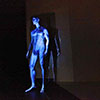
El Eco del Carlito was a collaboration between CAVI and the artist Ingrid Kristensen. It was a work with a focus on the expression of a digital layer on a mannequin. The mannequin came to life through the animation of the technology of advanced 3D projection.
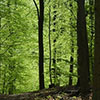
Black Bird Singing was an audio piece made by CAVI’s artist in residence, Jette Gejl, in connection with the major outdoor exhibition, “Sculpture by the Sea”, in 2009 in Aarhus.
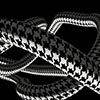
Pepita Sausage Race Track was a work of pop-up art by Jette Gejl. In this piece, the audience could experience an endless journey through a never-ending tube, which was decorated with a houndstooth check pattern (‘pepita’, in Danish).
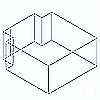
Airport Poem was an opera experiment based on a number of songs written for the FIGURA opera ensemble. The staging allowed the musicians, singers, and audience to move among each other while 3D stereo projections appeared on physical objects.
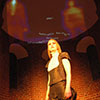
The stage play, Nathan without Title, by the Danish playwright Christian Lollike, was a scenographic installation in Aarhus’s cathedral.

One is Listen was an audiovisual piece that investigated the dynamic extremes of our perceptions, from the subtle, almost imperceptible, to the extremely loud, powerful and assertive.
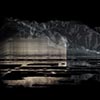
The 3D installation, Verdensrum presented the sign systems of three cultures, and their metaphoric implications. The project was conceived in interdisciplinary terms, and incorporated photography, film, music, and scent.
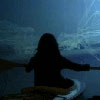
Hyperkinetic Kayak was an interactive installation consisting of a kayak, a virtual 3D landscape simulating a Greenland ice sea, and a continuous data feed of air temperatures around Greenland from the meteorological Institute in Greenland.

Honeymoon was an interactive opera installation created in collaboration with interaction designer Signe Klejs, and composer Niels Rønsholt.
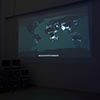
This work gathered data from satellites and meteorological stations from all over the world, and based on these data, determined where the sky was the bluest.
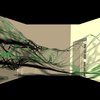
Jette Gejl's iconic worked with 3D stereo plays with the spectators sense of what is real and what is virtual; she collaborated with computer scientist Peter Møller-Nielsen on Room #1,2,3.
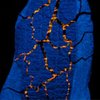
The Mejlby Stone installation is an augmentation of the famous Danish rune stone, and with projectors and tracking, the story of the stone is told through animation, illusion, and sound, and makes the audience an active part of the interactive storytelling.
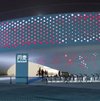
The Danish pavilion balanced digital art, urban design, and architecture. The enormous media facade attracted visitors, and reflected the human activity inside the construction, where people were able to view the Little Mermaid while walking or bicycling on the internal paths.
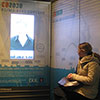
Inviting, interactive video installation that gave the public an opportunity to express its thoughts and ideas on the climate debate.
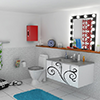
Cyberhus was an interactive 3D installation intended to give children and teenagers an opportunity to step inside a virtual representation of different rooms in a house. The installation provided a space where kids could meet and interact, and where adults could experience some of the kids’s Cyberspaces.
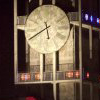
City Bug Report is an example of media architecture used to promote open government. Displaying interactions between the municipality and its citizens directly on the city hall tower in Aarhus, this system creates ambient awareness of the efficiency and transparency of running a city. Through a mobile interface, any problem ("bug") may be submitted to the city, and afterward tracked and shared online, creating a symmetrical interface with the city.
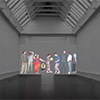
IFITRY was a 3D art video that explored people’s waiting postures. Visitors could experience the video through 3D glasses, which created the effect of the people waiting standing freely around the room.
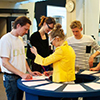
The Instant Kafé project invited people to participate in a discussion with people they never had met before. Inspired by 1700s coffee houses, Instant Kafé established the framework for discussions of all topics.
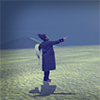
This piece is a collaborative scenographic development with the orchestra, Lis Er Stille. A variety of scenographic possibilities were examined, particularly real-time interaction, blue-screen, and 3D mapping.
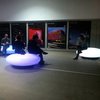
The Media Architecture Biennale 2012 in Aarhus, Denmark, brought together people from around the world who were interested in discussing and outlining media architecture of the future.
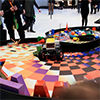
Race Track is for kids and fun-loving adults, featuring with cars equipped with 3D cameras that transmit their locations for a setup in which others can be "on the track" in 3D stereo, in a world that is combined with virtual 3D elements. This is an eventful new piece, playfully using 3D technologies in new combinations.
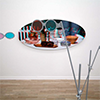
A combination of photographs and 3D experiences with red and green glasses sets the stage for an experience involving play and experimentation.
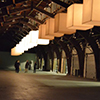
Spine was a fifty-meter-long, interactive installation based on twenty glowing cubes. The installation reacted to movement from nearby visitors, and when no one was around, it displayed new movements, lights, and sounds.
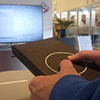
In this project users could create poems by interacting with a book. The aim of this work was to showcase one of the common characteristics of digital literature, namely, getting the user to do anything with the work to have it make sense.
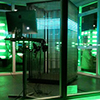
Atmosphere was an interactive installation that was presented at the City Hall Square in Copenhagen for the international climate summit, COP15. The installation measured the air's CO2 content with sensors located at three different locations in Copenhagen.
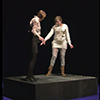
Drowning/Burning was an interactive sound installation that responded to the audience’s movements. The more the spectators moved, the more sound was played, and the output from the installation became a soundscape.
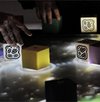
Radartable is an interactive, audiovisual installation, a musical instrument, and a platform for creative and social interaction. It allows people to express themselves musically, and collaborate with each other to influence their concert experiences, even if they have no ability to play music.